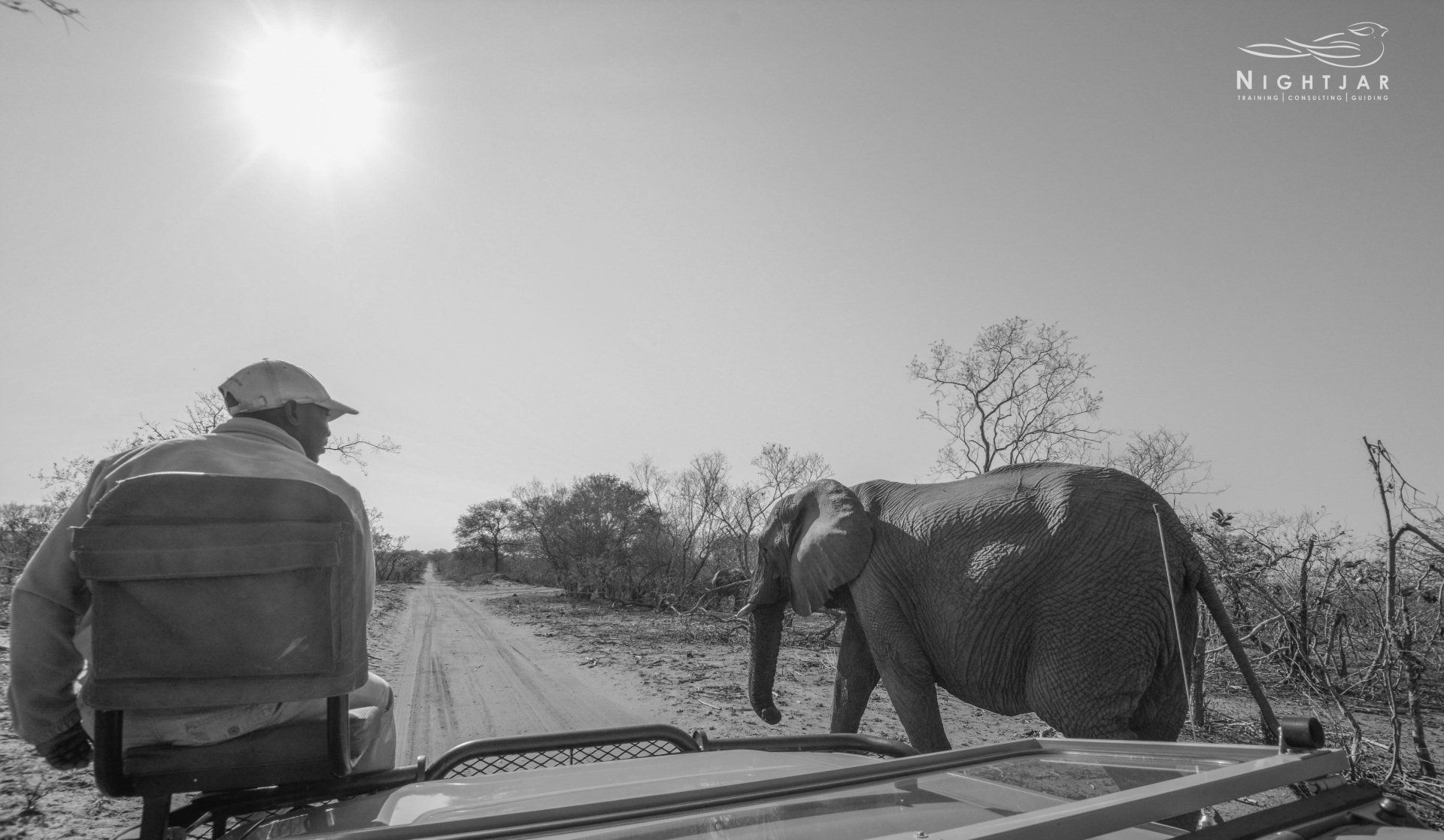Lying in Wait – A high altitude kill!
As many of you will know, the bush is always throwing unexpected surprises your way. This is what makes the whole experience so exciting and enjoyable – the opportunity to move away from the predictable. Animals work on their own schedule and appear (or don’t appear) when they feel like it.
This week, the Nightjar team have been flat out with Trails Guide training and assessments. Lots of walking in Big 5 areas and many fantastic encounters. However, it was on a Level 1 assessment drive that the surprising encounter was had….
The drive had started off quite well, with a journey of giraffe, some hippo out of the water and even a few buffalo lazily strolling down to one of the remaining water sources. From there, the plan was to head down to the nearby Klaserie river where the sounds of Vervet monkey alarm calls echoed through the warm afternoon air, potentially signalling a nearby predator.
After briefly stopping to view a pair of brightly coloured Broad-billed Rollers, a small group of Red-eyed Doves flew past, aiming for one of the many dead trees scattered along the river-line, hoping for a quick rest before coming down for a drink in the river. Nothing special right? So they were ignored until the sound of excessive flapping wings caught our attention.
Now, in the case of Doves, this is fairly common, as doves often fight over females and these fights can become quite brutal (which is why doves, in most African cultures, are known as a symbol of war). We turned back to see what the commotion was all about, only to find out that this was a battle of a whole different kind!
Waiting in ambush, was a young African Rock-Python. Pythons are most commonly encountered on the ground, due to their extremely heavy body size. Any “cold-blooded” animal tries to expel as little energy as possible, because they don’t know when the next feeding opportunity will come past. This individual, however, was a young adult, at around 1 – 2 years old. Young African Rock-Pythons are known to frequent trees to ambush a bird landing within striking distance. They expel less energy getting into position, as they weigh far less, and once in position, it’s all just a waiting game.
This poor Red-eyed Dove never saw it coming and was snatched off its perch before it had even settled properly. The dead Leadwood branch had provided excellent camouflage for the python. After a short while, the flapping eased and a few feathers aimlessly floating down to the ground or scattered into the breeze as the snake effortlessly constricted the bird to its last breath.
From there, it took a few moments to recover from the struggle and slowly started manoeuvring the dove into position and ready for consumption. This process causes much distraction for a snake, so if they feel threatened in anyway, they usually let go of their meal or regurgitate it to make for a hasty getaway. Interestingly, it is believed that snakes, no matter how big or small, won’t break any of their prey’s bones whilst suffocating it, as this will often break off in sharp shards, which could pierce through its skin, causing irreparable damage to the snake.
We decided to move on and leave the stealthy python in peace. On our way back, we saw another small herd of buffalo, a number of bushbabies and also a few genets chasing each other around, in what seemed to be a territorial dispute. The moon came up providing us with an ideal backdrop to reflect back on another day in Africa! Pure bliss and most importantly, the end of yet another successful Assessment drive.
Until Next Time,
Charles & the Nightjar Team
QUICK LINKS
SERVICES
All Rights Reserved | NightJar






